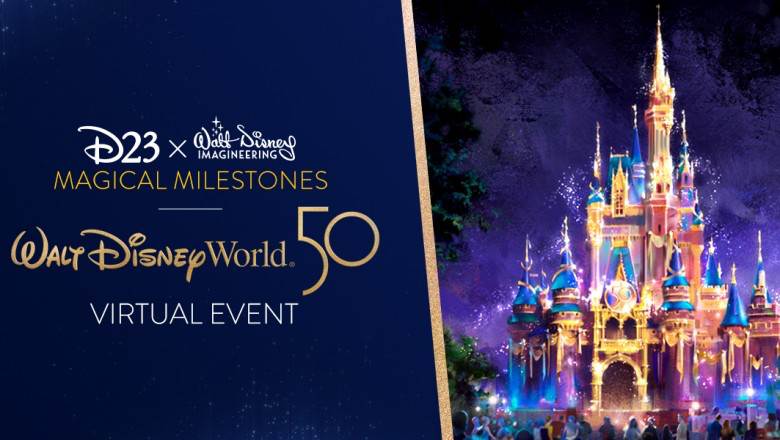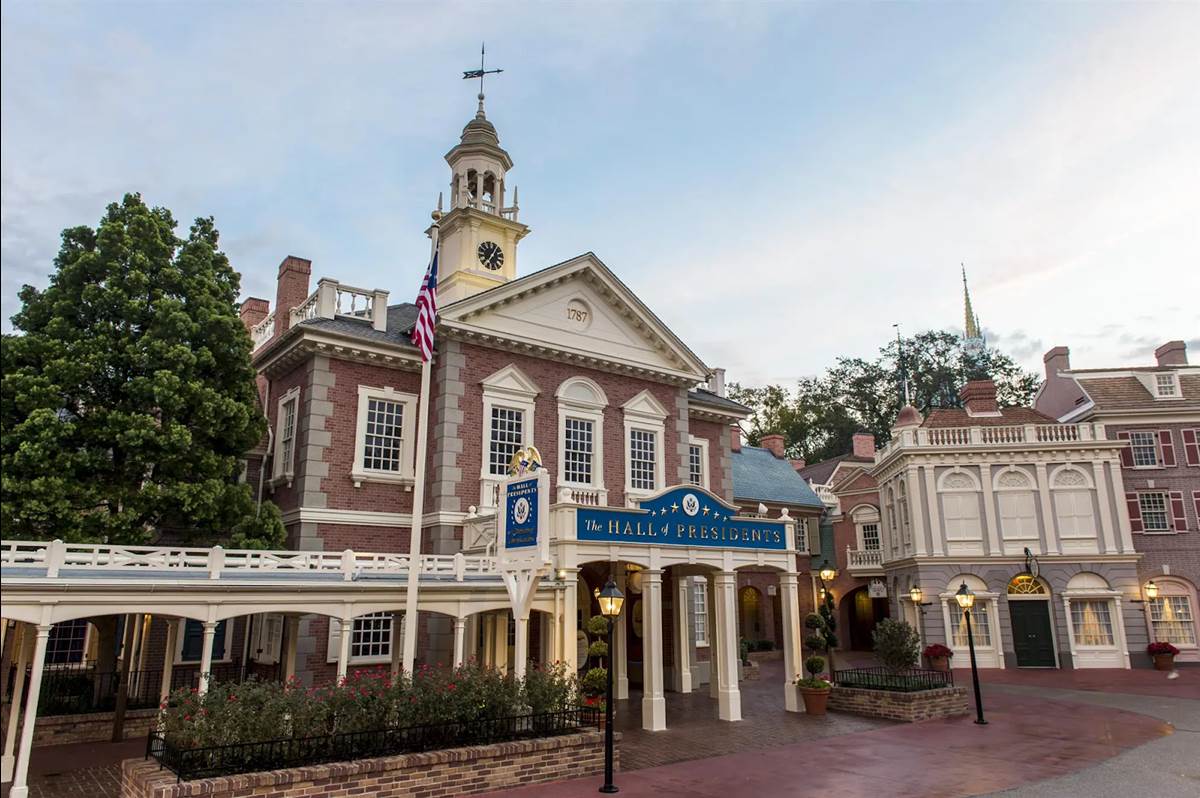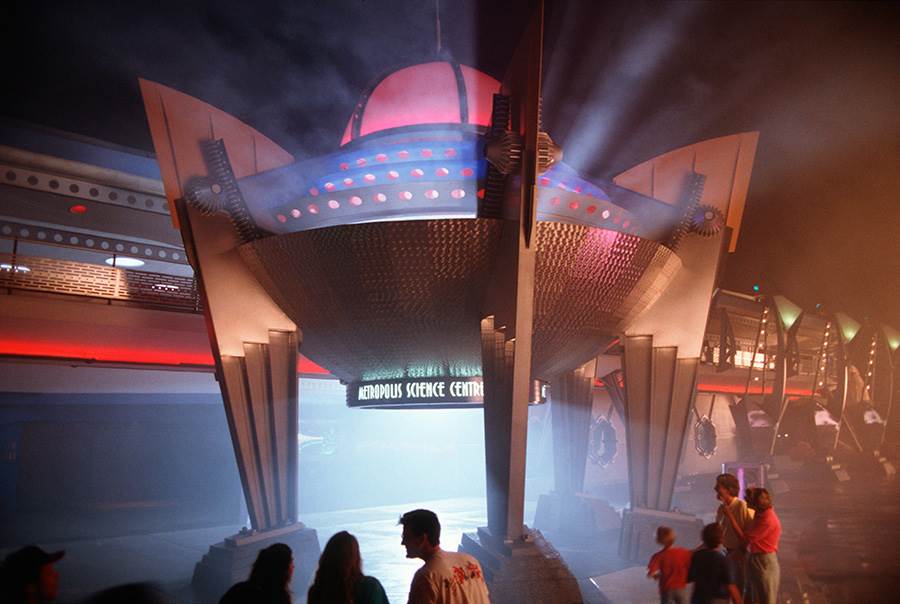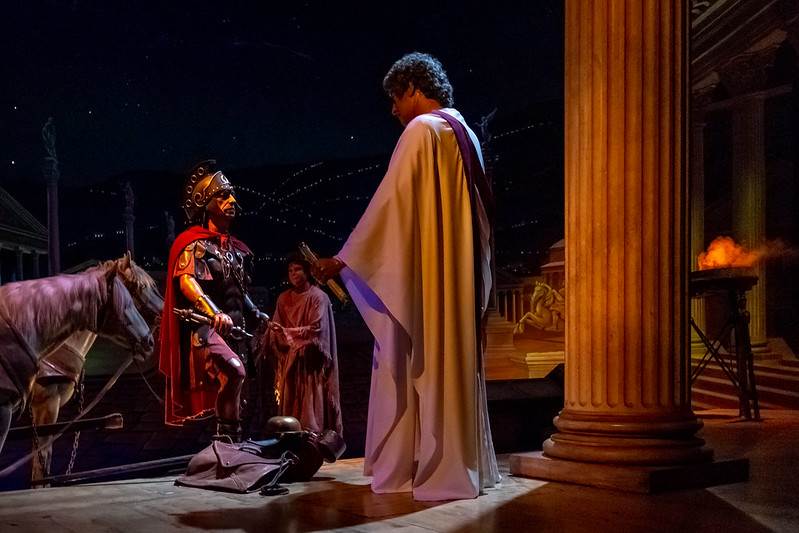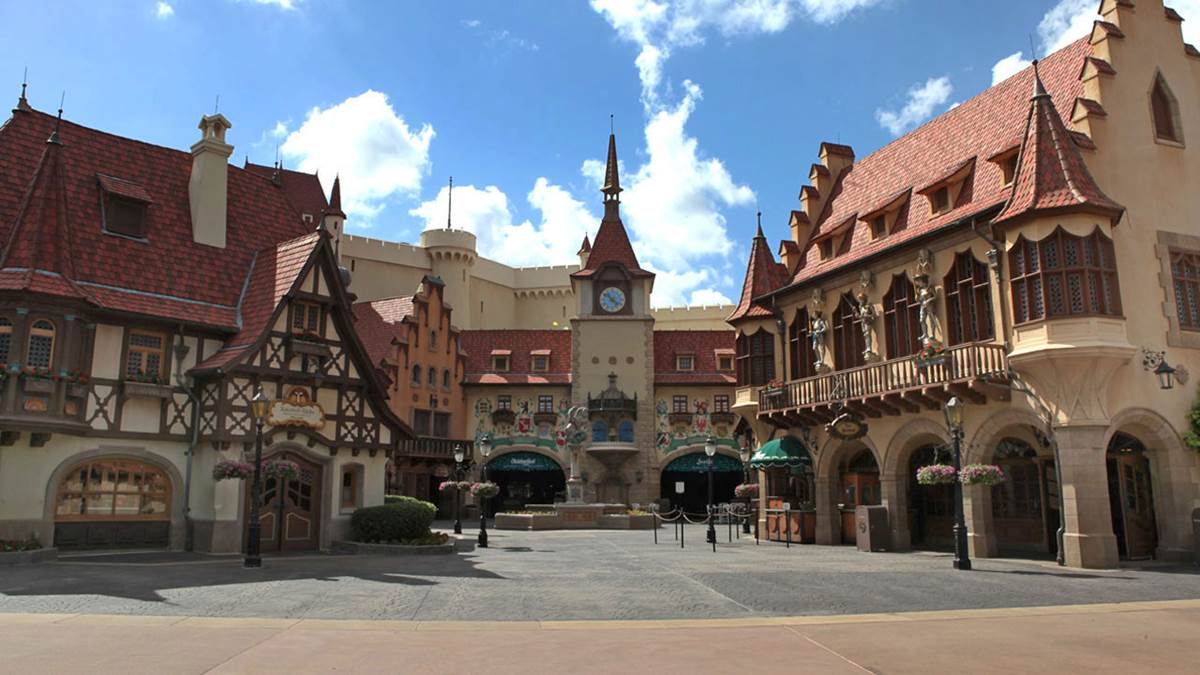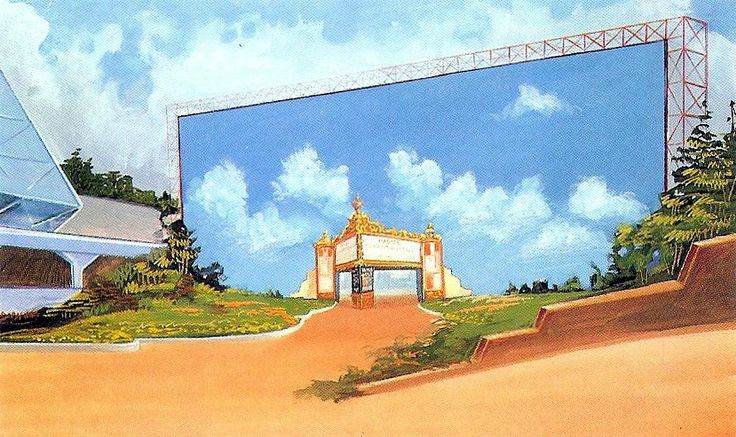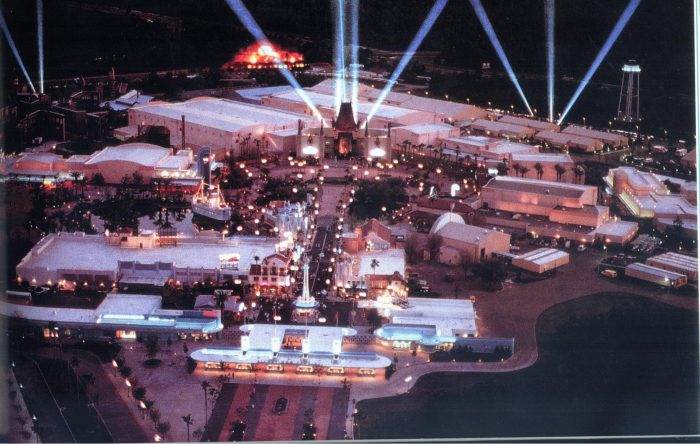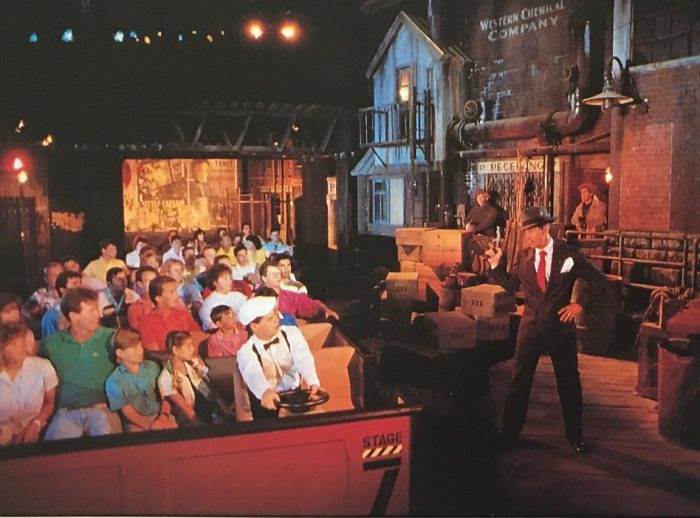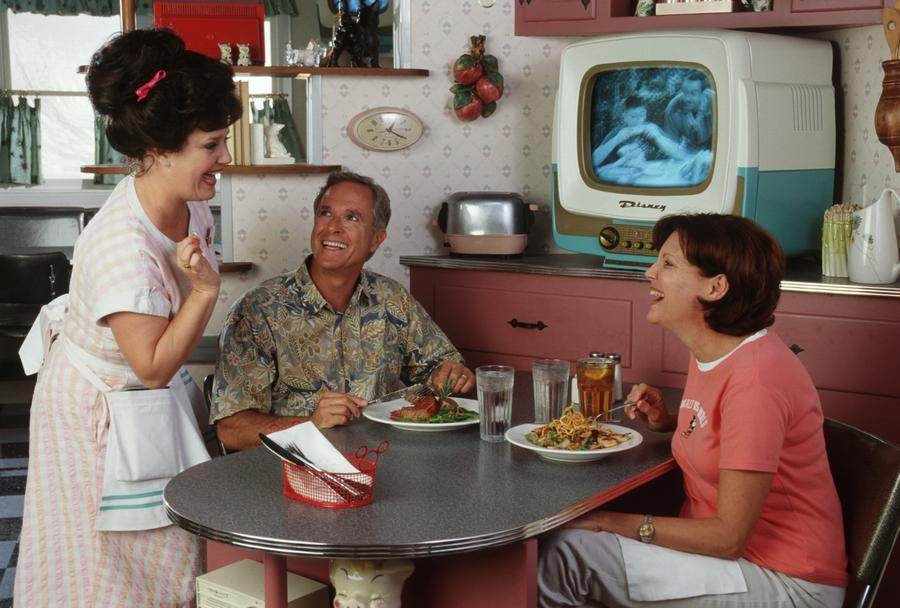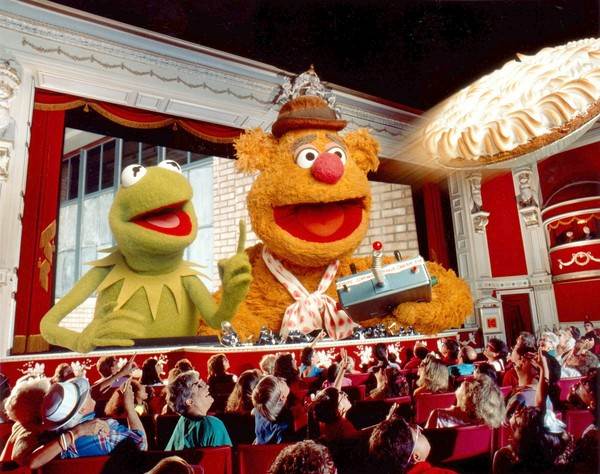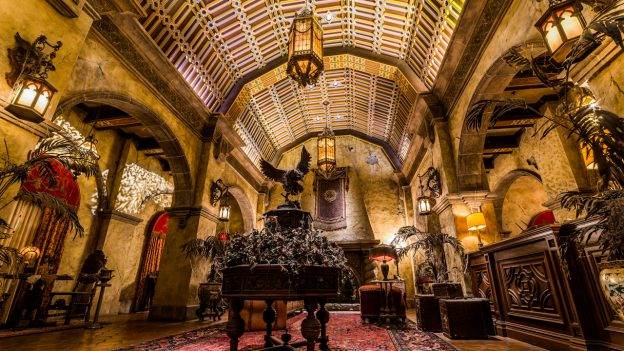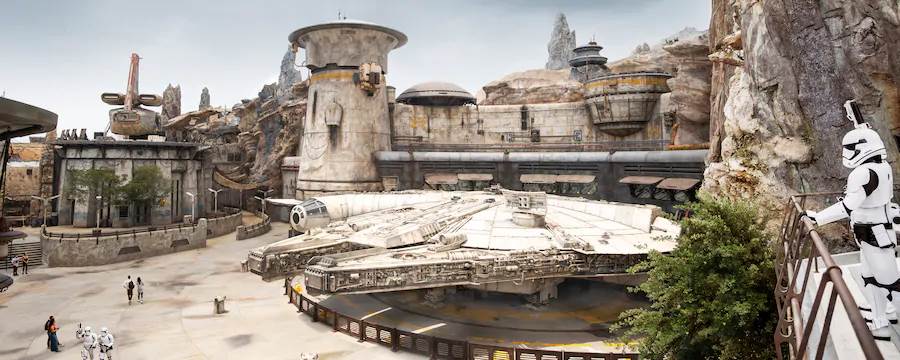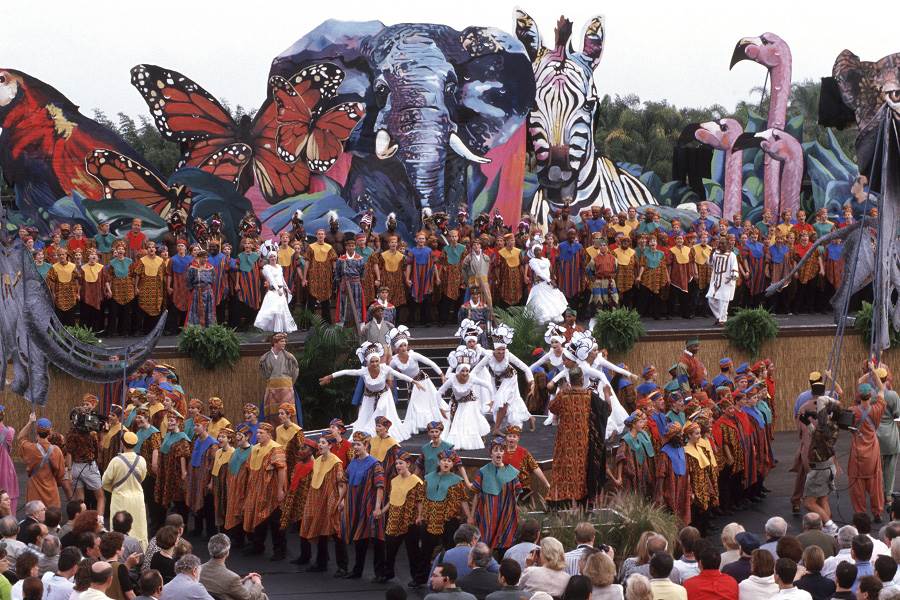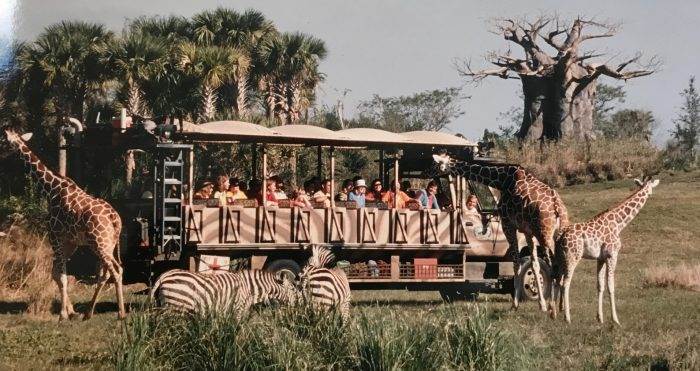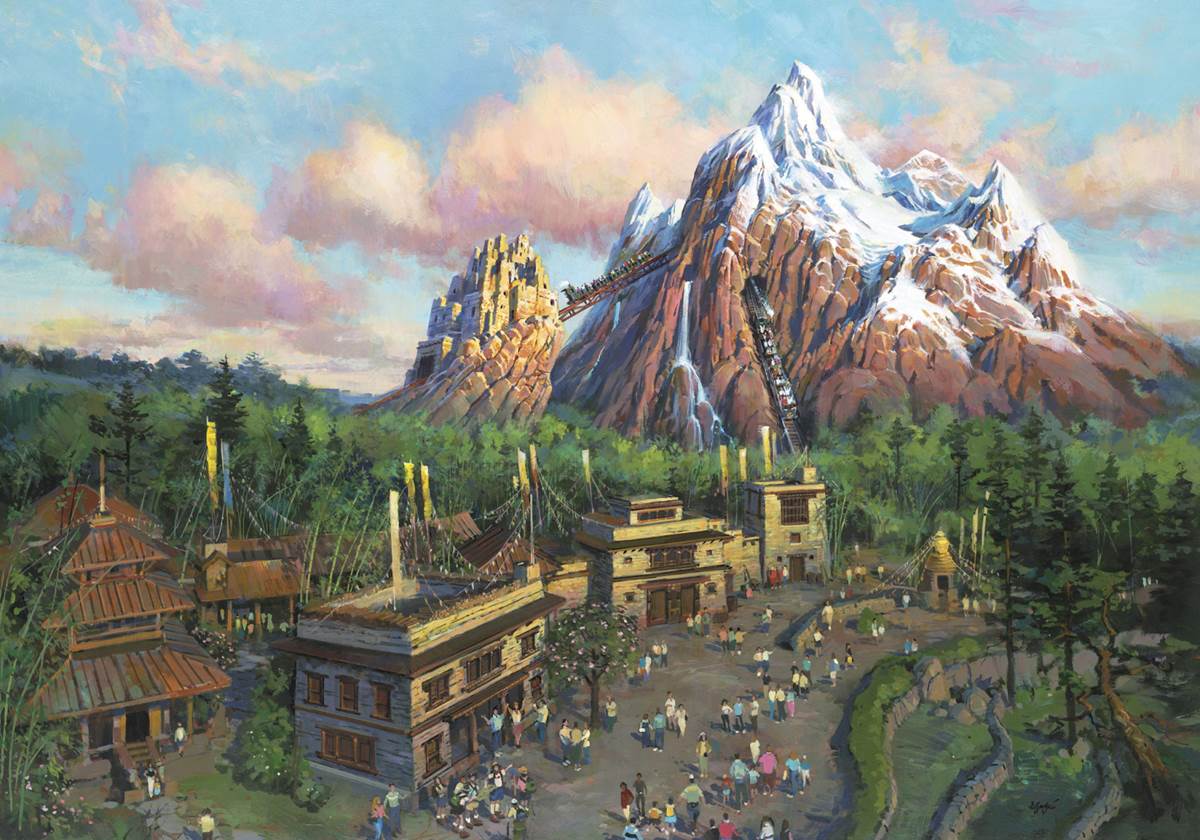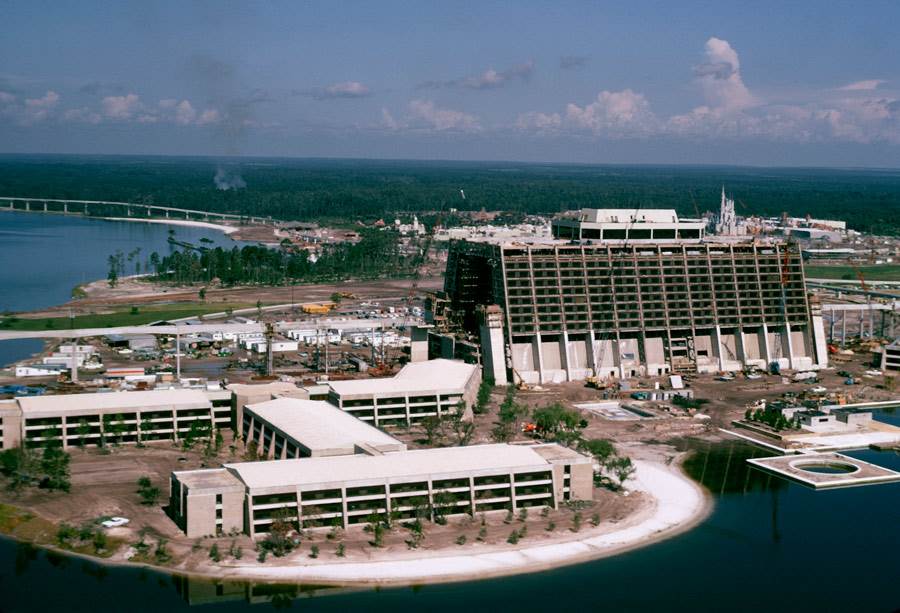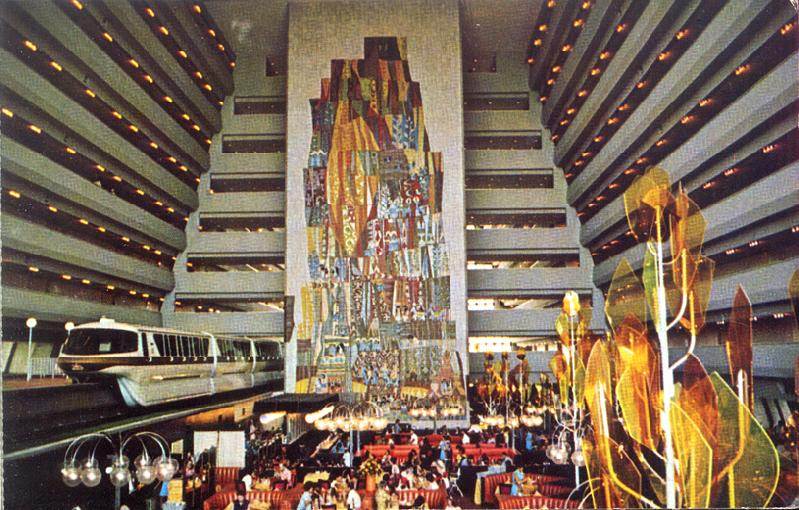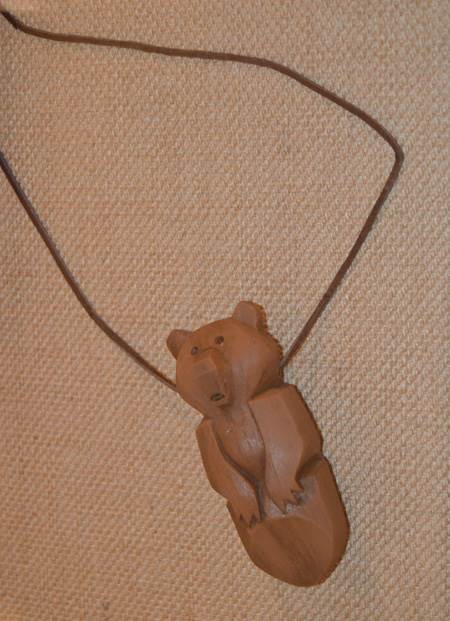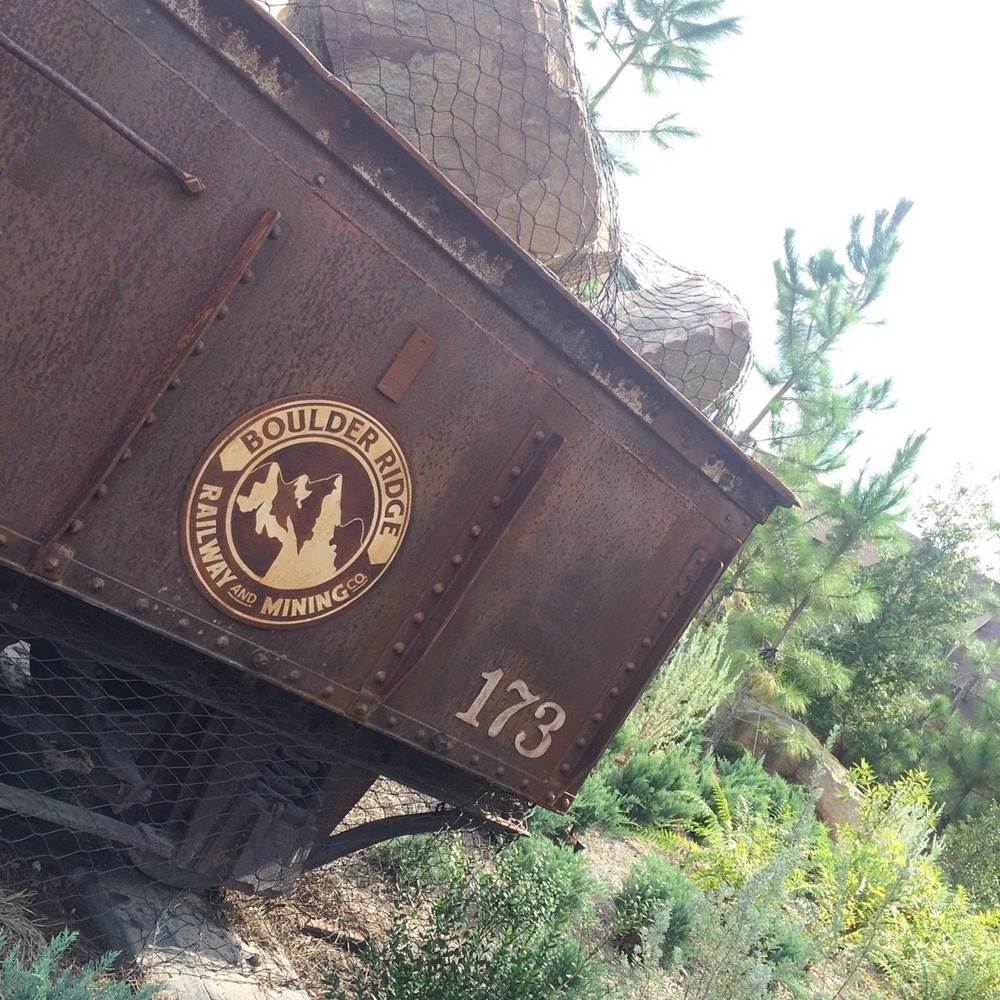D23 Gold Members have the chance to watch the special Magical Milestones presentation that takes a look back at 50 years of the Walt Disney World Resort, hosted by the director of The Imagineering Story on Disney+, Leslie Iwerks.
This exclusive virtual event will feature Imagineers telling stories from the resort’s origins and history, featuring beautiful artwork and storytelling, to plenty of behind-the-scenes stories that will let us meet some of the fascinating people who bring our favorite places to life:
- Retired Imagineer Eric Jacobson
- Portfolio Creative Executive Chris Beatty
- Retired Imagineer Peggie Fariss
- Portfolio Executive Producer Jodi McLaughlin
- President, WDI Creative & New Experience Development Bob Weis
- Portfolio Creative Executive Scott Trowbridge
- Executive Interior Design Barb Dietzel
- Disney’s Animal Kingdom Art Director Kyle Price
- Assistant Producer Jennifer Gerstin
- Manager of Communications Diego Parras
- Disney Legend Wing Chao
- Portfolio Creative Executive of Global Resort Design Bhavna Mistry
- Executive Project Manager Michael Davie
- Executive Architect David Stofcik
The introduction to the virtual event shows archival footage of each park’s evolution, as the Walt Disney World Resort grows in size before the proper introduction from Iwerks begins and we focus on each park individually. A lot of the stories that are told are fairly commonplace for Disney fans (Like the origin of the Utilidors/Walt saw a Frontierland Cowboy walking through Tomorrowland) but that doesn’t mean that there aren’t new things to learn about the history of the Walt Disney World Resort.
Going back to the Utilidors story, Retired Imagineer Eric Jacobson and Portfolio Creative Executive Chris Beatty shared that as experienced as they are with the Magic Kingdom, they admittedly still get lost in the “underground” tunnels beneath the park. Jacobson tells the anecdote that once he was trying to get into Frontierland and got lost, coming out of a door in the park in Liberty Square. I must say that I did start laughing a bit, familiar with the tunnel system myself, saying that he was actually pretty close, as those with the park will also realize as Liberty Square and Frontierland aren’t all that far apart.
The duo actually used this as a springboard to talk more about the addition of Liberty Square in the Magic Kingdom, a land unique to Walt Disney World. While they touch upon the story of Walt wanting the Edison Square/Liberty Street combo at the original Disneyland, they mention one of the main reasons Liberty Square was added to the park was the upcoming United States bicentennial in 1976. This is also mentioned in the Hall of Presidents episode of Behind the Attraction on Disney+. The idea of celebrating American history was on the top of people’s minds at the time, as the country was five years out from the landmark event.
They eventually set their sights on discussing the idea that Magic Kingdom’s core is a world of Fantasy, especially after EPCOT opened in 1982, which is grounded in realism and discovery. Jacobson even mentions that Future World was really the next evolution of Disneyland’s original Tomorrowland, which showcased newer technologies and displayed the “world on the move” with experiences like the Peoplemover, and Monorail, even freeways on the Autopia long before multi-lane highways were found everywhere. They also admitted that Tomorrowland, no matter what they would try would catch up in 5-10 years anyway and immediately be outdated, saying that’s why Walt Disney World introduced a science-fiction fantasy into the concept of Tomorrowland, with a story that took over the whole land with it’s full myth and lore in the mid-90s with the idea “the future that never was is finally here.” Though, that idea has slowly shifted itself from more of an original Sci-Fi story to what movies have the sci-fi/space feel and aesthetic that have some kind of fantasy lens in front of it and can offer an incredible adventure, even mentioning TRON Lightcycle / Run coming to the park, though they don’t go into great detail (or share an opening date) for the new attraction.
We then head over to EPCOT, a park that itself is approaching 40 years of existence with all kinds of evolution on its own, and currently under a massive renovation, making the park nearly unrecognizable from the one guests enjoyed on opening day back in 1982. As Imagineer Jodi McLaughlin shared, a quote from Walt Disney himself “gave us license” to make all the changes: “EPCOT will always be in a state of becoming.” This quote also opens the presentation that can be found in The EPCOT Experience at the park.
One thing great about this special D23 presentation is how candid some of the Imagineers are in their discussions, sharing core principles and ideas for each park or attraction or experience. The original idea according to Retired Imagineer Peggie Fariss and Portfolio Executive Producer Jodi McLaughlin, and perhaps why EPCOT resonates with guests, is that the template for the development of EPCOT was a showcase of history and the past, before guests could see the future and place themselves into it, giving them a sense of empowerment to decide their own future when they returned home (or literally on attractions in some cases).
Fariss told a fun anecdote that her attraction, Spaceship Earth, and World of Motion (both being developed at the same time) at its roots were very similar. However, Ward Kimball was taking a more weird, wacky, and humorous approach to the World of Motion whereas Spaceship Earth was to have a more serious, authentic tone. In fact, the authenticity goes into even the smallest (literally) of details. Hieroglyphics in the walls of the Egypt scene actually say something, and real graffiti from the real walls of Pompeii was used. Fariss revealed that John Hench thought something from the 12 Tables of Roman Law should be used in the attraction as you enter the Greek scene and enter the Roman scene. Within a few days, Peggie had a book about the subject and after research, found a piece that fit perfectly in that space and there was an excerpt installed in the attraction that said “If you are summoned to appear in court, you must appear but the cart need not be covered with pillows.”
More recognizable is the faux printing press that was installed in the attraction…but is it? Fariss says that it was built from the drawings on the original patent of the device.
While the group goes on to discuss the changes of EPCOT, with McLaughlin mentioning that the imposing structures of Communicore (at least on the west side) being torn down to make way for more green space and landscaping, as well as the removal of swaths of concrete throughout, making the park a nice place to “sit and grab a cup of coffee”, Iwerks had the single most important question for EPCOT fans: What about Figment?
McLaughlin replied while chuckling, “I don’t think Figment will ever go away.”
Across the World Showcase Lagoon, it was revealed that at the park’s 10 year anniversary, they did research with guests, surveying them about their experience in World Showcase. Thinking that the pavilions weren’t aging well, the teams were surprised to hear how many guests said “This REMINDED us of our trip to ______”, showing the authenticity of the detail and design of the pavilions. When asked if more countries are on their way, no specifics were mentioned but it was clear that they’re looking for ways to broaden the World Showcase experience, hinting that more World Showcase experiences are indeed on the horizon, and not just Remy’s Ratatouille Adventure in the France Pavilion.
One pavilion that never saw the light of day at EPCOT was a pavilion dedicated to the art of making movies, an idea so big that it evolved into its own park, becoming the third gate at Walt Disney World, the Disney-MGM Studios, now Disney’s Hollywood Studios. Ironically, in a celebration marking 50 years of Walt Disney World which started with Magic Kingdom, the portion of the program dedicated to the third park at the resort was the most fun and interesting.
President, WDI Creative & New Experience Development Bob Weis joined Iwerks alongside Portfolio Creative Executive Scott Trowbridge and Executive Interior Designer Barb Dietzel to discuss the park in a refreshingly candid segment that kicks off with Weis sharing that the park was really the result of Michael Eisner testing the Imagineering division as a strategic growth point for the Walt Disney Company.
We also learned that Eisner suggested that actual functioning soundstages be built alongside the original pavilion idea for EPCOT, which was really the turning point when the idea went from pavilion to park. Weis openly stated that there was a perceived notion that Central Florida was going to be the next Hollywood in terms of production with lots of incentives and programs to draw studios to the region, which would cause a rush for studio space, but Weis admitted that that ultimately never panned out (for Disney or any other studio) and they had to rethink their strategy, well after the park had opened.
Another key issue that Weis stated with the beginnings of the park, was that there WAS a demand to know how movies and animation were made, and Eisner loved the behind-the-scenes idea of the park. As time grew on and that information became more readily available (thanks to DVDs and such), especially with no active production aside from the animation studio, the interest was waning. Weis also pointed out the studio’s lackluster live-action film catalog and the fact there was not a broad movie portfolio which led to the MGM deal as one of the big challenges of the park.
The biggest challenge however, was time. The Disney-MGM Studios was designed and built in a 36-month timeline, causing teams to hurry through development and use the budget they were under wisely. One of the highlights of the original studio park was the iconic attraction, The Great Movie Ride, which was “a crazy idea,” because of the size and scope of the attraction, celebrating the classic films, but also because it required and gave Cast Members a real chance to perform, which in itself is very rare.
Along with the great level of detail that would be included in this single attraction, the group pointed out something else that made this park so unique when it opened: The dining options. The level of themed dining opportunities had not been seen before in a theme park. The Hollywood Brown Derby was where the Hollywood bigwigs and celebrities would wine and dine, Hollywood & Dine was more like an Automat where writers and directors would be, talking business. And Backlot Express, located near what would become Star Tours, was a quick service location as though sculptors, painters, and propmasters would be taking their lunch. At the time, Magic Kingdom dining was limited to few table service offerings, focusing mainly on fast food options so families can eat and move through the park and the fine dining in EPCOT was primarily focused on International Cuisine where the authenticity was part of the experience. The group credits Disney-MGM Studios as the real launching point for creating specialty dining as its own unique experience. Weis took great pleasure in sharing an anecdote where the President of Marvel Studios, Kevin Feige, cited that the park’s 50’s Prime Time Cafe is the inspiration behind the Marvel Original Series WandaVision (Now streaming on Disney+).
The short timeline for developing and building the park led to rapid expansion before the park even opened to the public. Work on Star Tours had begun before the park opened, and work on an expansion featuring the Muppets, inevitably resulting in Jim Henson’s final project, Jim Henson’s MuppetVision 3D, followed close behind. This expansion wasn’t just limited to attractions, as a corridor of dining was also added, resulting in the Sci-Fi Dine-In Theater and the ABC Commissary, which even though still highly themed on the inside carried over the studio and soundstage aesthetic on the outside.
Almost immediately after the park opened, the group pointed out that without active production, backstage environments would likely have to be repurposed into enhanced environments instead of passive ones where guests just observe. In time, this would result in attractions like Toy Story Mania, which served as a jumping off point for the whole of Toy Story Land. The first foray into this idea was the game-changing Twilight Zone Tower of Terror, which created a whole new level of immersion turning guests into active participants in an episode of the classic anthology series, The Twilight Zone by having them enter a fully realized, dimensional environment where instead of seeing the making of this story, the experience had evolved into going inside the story.
Portfolio Creative Executive Scott Trowbridge pointed out this shift in the tone of the park as a whole, using it as an opportunity to mention Star Wars: Galaxy’s Edge, the largest expansion in the history of the park. Where you’d expect to hear a lot more about this, the panel then jumps into how the next evolution of the “inside the story” concept is on the horizon with the Star Wars: Galactic Starcruiser. Together they shared that this resort experience is a whole new model for Disney, acting as part luxury cruise, part interactive game, live action role play, live action theater, all done in a way that has never been seen before in a mainstream commercial development.
The group shares more about the identity of each park, discussing how Disney-MGM Studios (Now Disney’s Hollywood Studios) has always been a pop culture park, with a vibe that needed constant refreshing to say on the cusp of the latest trends in Hollywood, music, movies, TV and such, with the interesting note that it should have been updated on a regular basis, and if you THOUGHT it was updated frequently, it was actually idealized to be updated more regularly than that.
As we head over to Disney’s Animal Kingdom, I must say that I was honestly disappointed with this segment. It’s rather telling that Leslie Iwerks wasn’t present for it either. To celebrate the anniversary of Walt Disney World over the last 50 years, and the newest theme park of the group, a park that has over 20 of history unto itself, and focus solely on a single attraction (Expedition: Everest), is quite underwhelming. Art Director Kyle Price even openly states at the beginning of the segment that he was unaware of Disney’s Animal Kingdom at all until a documentary about the making of Expedition: Everest aired on the Discovery Channel, a full 8 years after the park opened, with him landing the position at the park in 2015, 17 years after the 23 year old park opened.
That said, what they shared about the key guidelines of each experience in the park and how everything is developed under these rules was quite interesting. Everything is designed with the philosophy of “personal transformation through adventure,” which is a philosophy put in place by former Imagineer Joe Rohde. Guests will embark on these journeys (typically attractions) with the intent that they will be inspired or discover something about themselves through the adventures in the park, that (ideally) aren’t tied to any kind of film. Example: If you’re riding Kilimanjaro Safaris, each time you experience the attraction is different. One trip, your truck might be challenged by a rhino, perhaps showing you how powerless you are when facing nature, and on another, you might look out into the savannah and witness a giraffe being born.
It’s at this point that the group, Manager of Communications Diego Parras, Art Director Kyle Price, and Associate Producer (and former Secretary to Joe Rohde) Jennifer Gerstin jump into Expedition: Everest taking a deep dive into that single attraction, and how it ties into the pillars of the park: the intrinsic value of nature, a transformation through adventure, and a personal call to action. Price elaborates, saying that Everest follows these, mentioning that they built this Himalayan mountain that comes from a very important region in the world, that the natural world is combined with the human interaction (train), and the mythical tales of the yeti tie back to that natural world and the cultures in the region, with the environment at the park being fully realized and immersive, hopefully leading to that transformation through adventure.
Surprisingly, Pandora: The World of Avatar was briefly mentioned, showing how it falls into these pillars and values, with the mythology of the films (despite the earlier mention of a lack of film based experiences) tying into the parks messages of conservation and ecology.
After looking at Disney’s Animal Kingdom, we then take a deep dive into the resorts of Walt Disney World, with Disney Legend Wing Chao, Portfolio Creative Executive of Global Resort Design Bhavna Mistry, Executive Project Manager Michael Davie and Executive Architect David Stofcik sharing the evolution of over two dozen resorts on property. According to the group, of those resorts, how many tie back to the two original hotels of Walt Disney World? If you guessed all of them, you’d be right.
While it usually just came down to the idea of “this can’t just be a big box.” and had to maintain that exceptional architectural flair and brand of storytelling that make Disney resorts stand out, every resort connects back to Disney’s Contemporary Resort, and Disney’s Polynesian Village Resort. In fact, most of the designers point to Disney’s Contemporary Resort as the inspiration for their careers, citing the iconic moment when they first saw a monorail glide through the building, or stepping onto the hotel’s Grand Canyon Concourse and being in awe.
In regards to storytelling, the group mentions the expansion of Disney’s Coronado Springs Resort, and how the easiest idea would be to do something with The Three Caballeros, but further research led them to a more subtle, classy, and beautiful idea when they discovered Walt Disney’s collaboration with Salvador Dali, called Destino, which allowed them to borrow the look and the style of the film in an elegant way, but keep the Disney flair and touches. This also led to the naming of the new building at Disney’s Coronado Springs Resort the “Gran Destino Tower.” A different expansion at Disney’s Wilderness Lodge was a little less subtle, but still elegant in its own way, with the new Copper Creek Cabins (part of Disney’s Vacation Club) sporting touches borrowed from the Walt Disney Animation Studios feature, Brother Bear.
Aside from my love of the film Brother Bear (yes, I know I’m in the minority), this mention of the expansion at Disney’s Wilderness Lodge caught my attention as a park fan simply because they mentioned some reused props at the new Boulder Ridge pool area. Mine carts that decorate the area surrounding one of the hotel’s most popular amenities once had a previous life at Disney-MGM Studios’ Backlot Tour, where they could be found at the signature moment of that attraction, Catastrophe Canyon.
This Magical Moments virtual event celebrating 50 years of Walt Disney World is still available to D23 Gold Members, and can be found at D23.com.
no obligation quote from MouseFanTravel.com

